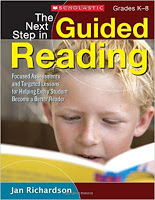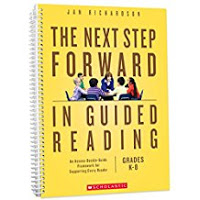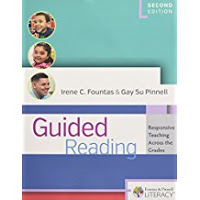
Are you an intermediate teacher that is not using small
group reading instruction in your classroom yet? It is one of The. Most. Powerful. instructional strategies you can use to
accelerate the progress and overall reading growth of all of your
students. It is so powerful in fact, that even
middle and high school teachers are using it now with gusto! Yet, not all intermediate teachers are using
it and we would argue that they should be. Why? How many times do teachers say…”If I only had
more time to meet with my students to work on their individual needs, they’d
make more progress.” Or….”My students’
abilities range from a couple of years below grade level, to a year or more
above level. How am I supposed to teach that?”
We hear these things all the time. Yet
there are still so many intermediate teachers teaching whole group, or whole
group and conferring only. Whole group
and conferring are great starts, but if you really want to multiply the growth
of students, they are not enough. If you really want to multiply your students’
growth, small groups are a must! Whether
you use strategy grouping or traditional small group guided reading, small
groups are the way to go. Not convinced
yet? Here are just a few of the
countless reasons to support small group teaching.
*To know your students’ exact strengths and weaknesses in
reading
*To use flexible grouping to support responsive instruction
*To personalize instruction to the specific needs of each
student on a frequent (several times per week) basis
*To teach students how to work on and through complex texts
*To provide direct, explicit explanations of a strategy that
students have not yet mastered
*To provide appropriate scaffolding for your students
tailored to their needs
*To provide modeling of thinking strategies, especially
tricky higher level critical thinking
*To stretch the thinking and take it deeper for students
working beyond grade level standards
*To teach and model appropriate, meaningful ways to have rich
conversations about books and texts students read
*To provide instruction and modeling of how to respond in
written format to texts, especially for students who have difficulty with
written responses (ELL, impoverished literacy background, etc.)
*To provide instructional level reading materials without
embarrassing below grade level readers
*To develop vocabulary knowledge more thoroughly for your ELL
students and students of impoverished literacy backgrounds
*To provide specific decoding and word work abilities and other foundational skills for students
below grade level (And don’t forget the intermediate grades CCSS have word work
learning, too.)
*To provide specialized interventions for students who are significantly
below grade level
are so many more reasons to use small group instruction, but these are a good
start. Have we convinced you yet? We hope so.
But just in case we haven’t, here is one more tidbit. I teach reading interventions to students who
are one or more years below grade level.
Every single year without fail, the students that make the MOST
progress, are those that come from classrooms in which the teachers use small
group teaching. Plain and simple. It works!
So won’t you give it a try?
Check out our favorite books for small group teaching. All are available at Amazon (we are not an
affiliate) or the publishers online.




